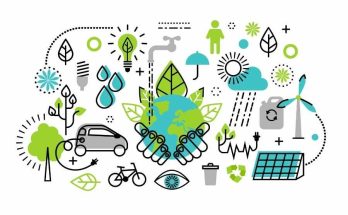By Alejandro Angulo
Perhaps there weren’t too many expectations for the UN Climate Change Conference (COP27) that truly urgent, determining, financial agreements would be made. Even with all this, the following agreements were reached:
- The 1.5ºC scenario is still going, and we need to comply with it to avoid devastating effects. It is essential to reduce emissions by 45%, with respect to 2010 levels, and to reach zero net emissions by 2050. Countries are urged to accelerate their climate actions and to review and increase their goals to 2030, in line with the Paris Agreement, before the end of 2022.
- We must accelerate the reduction of carbon and the elimination of inefficient fossil subsidies, providing support for a fair transition.
- Developed countries must work to urgently and transparently meet the US$100 billion climate finance target. They need to revise this target upwards before 2025. Multilateral banks and developed countries are urged to align their financing activities with the Paris Agreement.
- There is in place a two-year plan to set a global goal for adaptation to climate change, Developed countries are being asked to double their financial support for adaptation by 2025 for developing countries.
- Companies will be able to participate in the Global Balance of 2030. The situation will be assessed, with decisions adopted accordingly, and climate laws will be reviewed.
- A financial support mechanism is launched for developing countries, so that they can face the impacts of climate change.
- More than 30 countries—including the United States, Canada, and Italy—have pledged to end public support for fossil fuels by the end of 2022.
The Secretary General of the United Nations, pointed out that the agreements “reflect the interests, the conditions, the contradictions, and the political will in today’s world. They represent an important step, but unfortunately, the collective political will has not been enough to overcome some deeply rooted contradictions.”
The reduction of global greenhouse gas emissions remains far below what’s necessary to preserve a habitable climate. Support for the most vulnerable countries affected by climate change remains insufficient. In addition, COP26 produced other pacts and announcements (apart from the Glasgow Pact for Climate) which can have important positive effects. These include:
- Forests: 137 countries took a historic step by committing to halt and reverse forest loss and land degradation by 2030. This pledge is backed by US$12 billion of public money and US$7.2 billion of private finance. In addition, the CEOs of more than 30 financial institutions, with more than US$8.7 trillion in international assets, committed to eliminate investments in activities related to deforestation.
- Methane: 103 countries, 15 of them major emitters, have signed up to the Global Methane Pledge. The goal is to limit methane emissions by 30% (relative to 2020 levels) by 2030. Methane, one of the gases that contributes the most to the greenhouse effect, is responsible for a third of the current warming derived from human activities.
- Cars. More than 30 countries, six major vehicle manufacturers, and other players such as cities, expressed their determination that all new car and van sales will have zero emission by 2040 internationally, and by 2035 in leading markets. This will accelerate the decarbonization of road transport, currently responsible for around 10% of global greenhouse gas emissions.
These agreements are important. However, what counts is the political and economic will of the members to achieve it. And it’s also essential that funds be available to carry out the actions.
In Mexico, the states have to establish goals for annual reforestation and the protection of carbon reservoirs, and have a green (state) tax on carbon dioxide emissions. The introduction of renewable energies must be accelerated, especially in the industrial and business sectors, carry out energy efficiency measures, and prioritize low-emission public transport.




